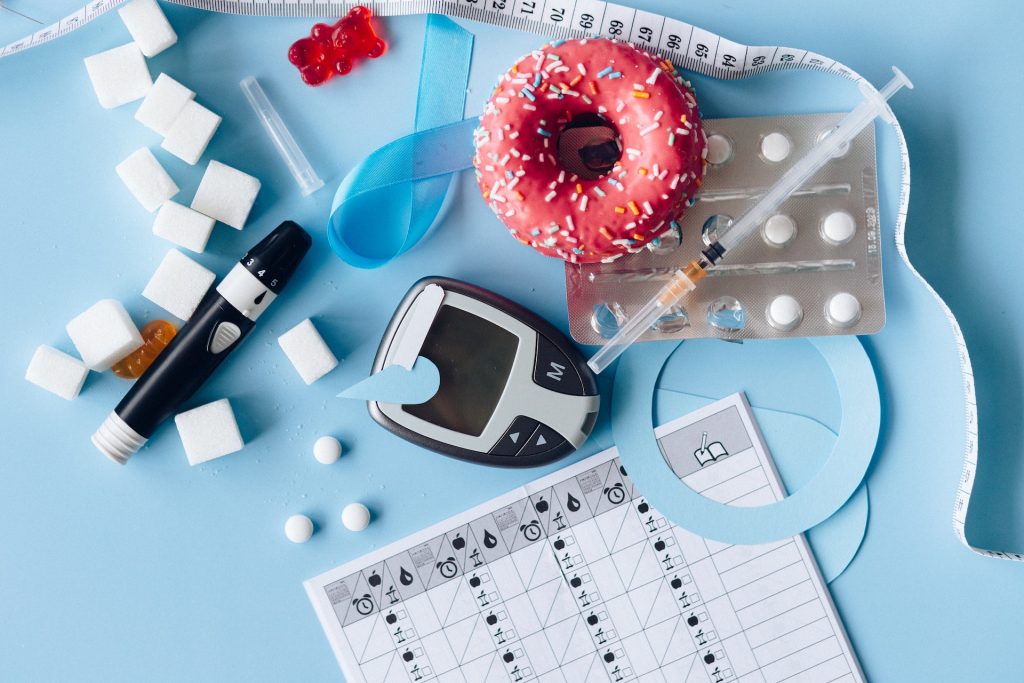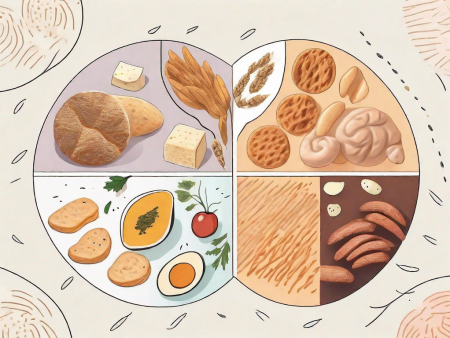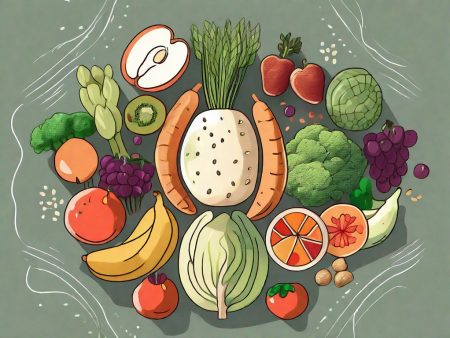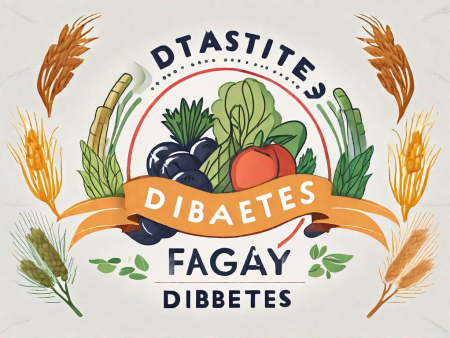Learn about the numerous benefits of clean eating for diabetes management and how it can positively impact your overall health.
Discovering the Benefits of Clean Eating for Diabetes
In today’s world, where fast food and sugary treats reign supreme, it’s easy for our diets to go off track. For individuals with diabetes, maintaining a healthy eating plan is crucial for managing blood sugar levels and promoting overall well-being. That’s where clean eating comes into play. By embracing a clean diet, filled with nourishing whole foods, those living with diabetes can unlock a myriad of benefits. In this article, we’ll delve into the world of clean eating and explore its powerful impact on diabetes management.
Understanding Diabetes: A Brief Overview
Before we dive into the wonders of clean eating, it’s essential to have a basic understanding of diabetes itself. Diabetes is a chronic condition characterized by high levels of blood sugar. There are different types of diabetes, including type 1, type 2, and gestational diabetes. Regardless of the type, the main player in blood sugar regulation is insulin.

The Role of Insulin in Blood Sugar Regulation
Insulin acts as a key that unlocks cells, allowing glucose (sugar) to enter and provide energy. In individuals with diabetes, the body either doesn’t produce enough insulin or cannot effectively use the insulin it produces. This results in glucose buildup in the bloodstream, leading to elevated blood sugar levels.
Insulin is produced by specialized cells in the pancreas called beta cells. These cells continuously monitor the blood sugar levels and release insulin accordingly. When blood sugar levels rise after a meal, the beta cells release insulin into the bloodstream. Insulin then travels to various cells in the body, signaling them to open up and absorb glucose. This process helps maintain stable blood sugar levels.
In addition to regulating blood sugar levels, insulin also plays a crucial role in the storage of excess glucose. When there is an excess of glucose in the bloodstream, insulin signals the liver, muscles, and fat cells to store the excess glucose as glycogen or fat for later use. This storage mechanism ensures that the body has a constant supply of energy even when food intake is limited.
Types of Diabetes and Their Differences
Type 1 diabetes is an autoimmune condition where the pancreas produces little to no insulin. It is usually diagnosed in childhood or early adulthood and requires lifelong insulin therapy. Without sufficient insulin, glucose cannot enter the cells, leading to high blood sugar levels. Type 1 diabetes is not preventable and is not caused by lifestyle factors.
Type 2 diabetes, on the other hand, occurs when the body becomes resistant to insulin or doesn’t produce enough of it. This type of diabetes is strongly linked to lifestyle factors such as poor diet, sedentary lifestyle, and obesity. In type 2 diabetes, the body’s cells do not respond effectively to insulin, leading to elevated blood sugar levels. This type of diabetes can often be managed through lifestyle changes, such as a healthy diet, regular exercise, and weight loss.
Gestational diabetes affects pregnant women and usually resolves after giving birth. During pregnancy, hormonal changes can make it difficult for the body to use insulin effectively, resulting in high blood sugar levels. Gestational diabetes requires careful monitoring and management to ensure the health of both the mother and the baby. Women who have had gestational diabetes have an increased risk of developing type 2 diabetes later in life.
It’s important to note that diabetes is a complex condition influenced by various genetic, environmental, and lifestyle factors. While some risk factors cannot be changed, such as family history, age, and ethnicity, adopting a healthy lifestyle can significantly reduce the risk of developing type 2 diabetes and help manage all types of diabetes.
The Concept of Clean Eating
Now that we’ve covered the basics of diabetes, let’s take a closer look at what clean eating entails. Clean eating is not about extreme dieting or deprivation. Instead, it emphasizes the consumption of whole, unprocessed foods in their most natural state.
Clean eating is more than just a diet; it is a lifestyle that promotes overall health and well-being. By choosing to eat clean, you are nourishing your body with nutrient-dense foods that provide essential vitamins, minerals, and antioxidants.
When you adopt a clean eating approach, you prioritize the consumption of fresh fruits and vegetables. These colorful and vibrant foods are packed with vitamins, fiber, and phytochemicals that support optimal health. Whether it’s a juicy apple, a crisp salad, or a bowl of mixed berries, incorporating a variety of fruits and vegetables into your diet is key.

Defining Clean Eating
Clean eating involves choosing fresh fruits and vegetables, whole grains, lean proteins, and healthy fats. It means opting for foods that are free from artificial additives, preservatives, and excessive added sugars or salts.
When you choose whole grains, such as quinoa, brown rice, or whole wheat bread, you are providing your body with a good source of fiber and essential nutrients. These grains are less processed and retain more of their natural nutrients compared to refined grains.
Lean proteins, such as skinless chicken breast, fish, tofu, or legumes, are excellent choices for clean eating. These proteins are low in saturated fats and provide essential amino acids that support muscle growth and repair.
Healthy fats, such as avocados, nuts, and olive oil, are an essential part of a clean eating diet. These fats provide energy, support brain health, and help absorb fat-soluble vitamins. However, it is important to consume them in moderation as they are high in calories.
The Principles of a Clean Diet
When it comes to clean eating, there are no hard and fast rules. However, some principles serve as a helpful guide. Prioritize whole foods over processed ones, consume a variety of colorful fruits and vegetables, opt for lean sources of protein, choose whole grains over refined grains, and include healthy fats in moderation.
By prioritizing whole foods, you are avoiding the consumption of highly processed and refined foods that are often high in added sugars, unhealthy fats, and artificial ingredients. Whole foods provide a wide range of nutrients that are essential for optimal health.
Consuming a variety of colorful fruits and vegetables ensures that you are getting a diverse range of vitamins, minerals, and antioxidants. Each color represents different phytochemicals that have unique health benefits.
Opting for lean sources of protein helps to reduce the intake of saturated fats and cholesterol. These proteins are also rich in essential amino acids that are necessary for the body’s growth and repair processes.
Choosing whole grains over refined grains provides more fiber, vitamins, and minerals. Whole grains are less processed and retain the bran and germ, which contain valuable nutrients.
Including healthy fats in moderation is important for overall health. These fats provide essential fatty acids, support brain function, and help absorb fat-soluble vitamins. However, it is important to be mindful of portion sizes as they are calorie-dense.
In conclusion, clean eating is a lifestyle that promotes the consumption of whole, unprocessed foods. By adopting this approach, you are nourishing your body with nutrient-dense foods that support optimal health and well-being.
The Connection Between Clean Eating and Diabetes
So, why should individuals with diabetes consider embracing a clean eating lifestyle? The connection lies in the impact that food choices have on blood sugar levels and overall health.
Living with diabetes requires careful management of blood sugar levels to prevent complications and maintain optimal health. Clean eating, which focuses on consuming whole, nutrient-dense foods, can play a crucial role in achieving these goals.
How Clean Eating Affects Blood Sugar Levels
By focusing on whole, nutrient-dense foods, clean eating helps to stabilize blood sugar levels. Whole foods are typically lower in carbohydrates and have a lower glycemic index, meaning they cause a slower rise in blood sugar levels compared to processed foods.
For example, instead of consuming a sugary cereal for breakfast, a person with diabetes can opt for a bowl of steel-cut oats topped with fresh berries and a sprinkle of cinnamon. This simple swap provides a steady release of glucose into the bloodstream, preventing sudden spikes in blood sugar levels.
Clean eating also emphasizes the consumption of lean proteins, such as chicken, fish, and tofu, which have minimal impact on blood sugar levels. Pairing these proteins with fiber-rich vegetables and whole grains further helps to regulate blood sugar levels by slowing down the absorption of glucose.
The Impact of Processed Foods on Diabetes
Processed foods, such as sugary snacks, refined grains, and sugary beverages, can wreak havoc on blood sugar control. These foods often contain high amounts of added sugars, unhealthy fats, and are stripped of beneficial nutrients. By reducing processed foods and embracing clean eating, individuals with diabetes can take control of their blood sugar management.
When individuals with diabetes consume processed foods, their blood sugar levels can rapidly spike, leading to short-term complications like hyperglycemia. Over time, these frequent spikes can contribute to long-term complications such as nerve damage, kidney disease, and cardiovascular problems.
By choosing clean eating, individuals with diabetes can avoid the detrimental effects of processed foods. Instead of reaching for a bag of potato chips, they can snack on a handful of almonds or carrot sticks with hummus. These healthier alternatives provide essential nutrients and are less likely to cause a sudden surge in blood sugar levels.
Furthermore, clean eating promotes overall health and well-being, which is especially important for individuals with diabetes. By consuming a variety of fruits, vegetables, whole grains, and lean proteins, individuals can support their immune system, maintain a healthy weight, and reduce the risk of developing other chronic diseases often associated with diabetes, such as heart disease and certain types of cancer.
In conclusion, the connection between clean eating and diabetes is clear. By making conscious choices to prioritize whole, nutrient-dense foods over processed options, individuals with diabetes can better manage their blood sugar levels, reduce the risk of complications, and improve their overall health and well-being.
The Benefits of Clean Eating for Diabetes Management
Now, let’s explore the numerous benefits that clean eating can bring to individuals living with diabetes.
Improved Blood Sugar Control
One of the most significant advantages of clean eating for diabetes management is improved blood sugar control. By choosing whole, real foods, individuals can better manage their glucose levels and reduce the need for insulin or medication.
Weight Management and Diabetes
Maintaining a healthy weight is crucial for those with diabetes. Clean eating promotes weight management by providing nutrient-dense foods that satisfy hunger without excessive calories. Furthermore, clean eating discourages the consumption of high-calorie processed foods, allowing individuals to shed excess pounds and reap the benefits for their diabetes management.
Reducing the Risk of Diabetes Complications
Diabetes can lead to various complications, including heart disease, kidney problems, and nerve damage. Clean eating plays a role in reducing the risk of these complications by providing the body with essential nutrients, supporting overall health, and maintaining stable blood sugar levels.
Implementing a Clean Eating Plan for Diabetes
Ready to embark on a clean eating journey to manage your diabetes? Here are some practical tips to help you get started.
Tips for Starting a Clean Diet
Begin by gradually incorporating more whole foods into your diet. Replace refined grains with whole grains, opt for fresh fruits and vegetables, and choose lean proteins. Experiment with new recipes and flavors to keep things exciting. Remember, small changes can make a big impact.
Overcoming Challenges in Clean Eating
Clean eating is not always a walk in the park, especially in a world filled with tempting treats. To overcome challenges, plan your meals ahead, batch cook to save time, and surround yourself with a supportive community or healthcare team. Don’t be too hard on yourself – it’s all about progress, not perfection.
By embracing the principles of clean eating, individuals with diabetes can discover a world of benefits for their overall health and blood sugar management. From improved glucose control to weight management and reduced risk of complications, clean eating holds the key to a nourished and vibrant life with diabetes. So, why not give it a try and unlock the profound benefits clean eating has to offer?







